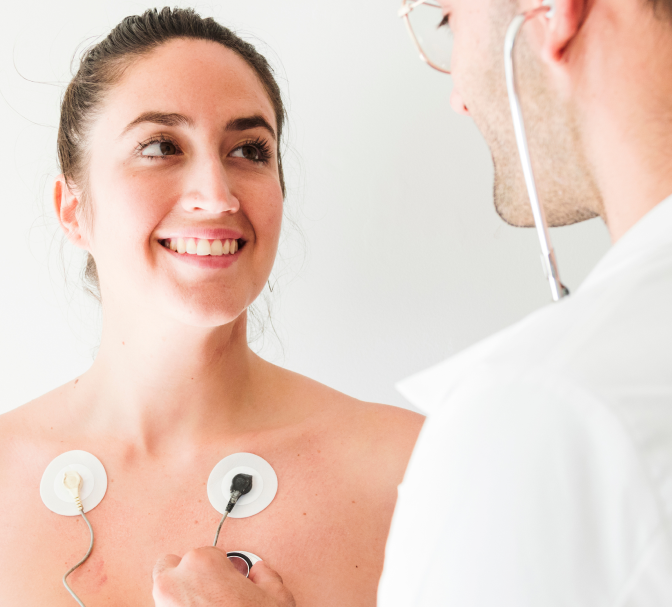ELECTROCARDIOGRAPHY

Electrocardiography is a diagnostic examination procedure, during which the heart impulses are measured and the electronic potential of the heart is registered. The examination can help to estimate the patient’s heart condition, measure the efficiency of previously applied medical treatment methods, as well as diagnose heart diseases on time.
When a patient should take the electrocardiography test?
The patient is advised to do an electrocardiography examination if the following symptoms are experienced:

Electrocardiography might help to diagnose:
More about the electrocardiography procedure
During electrocardiography, the doctor attaches small sensors or electrodes to the skin of the patient’s arms, legs, and chest. These sensors measure the direction and amount of electrical currents during the patient’s heartbeat. The electrodes are connected to equipment that records every electrode signal. Each recorded signal represents cardiac activity in different parts. The procedure usually takes about three minutes and is non-invasive and painless for the patient.
